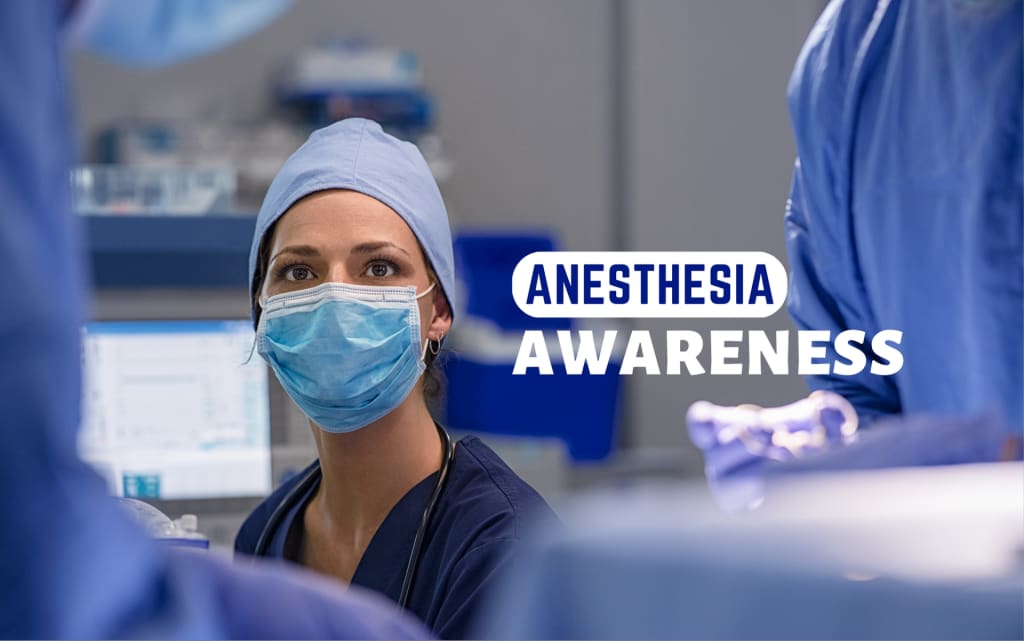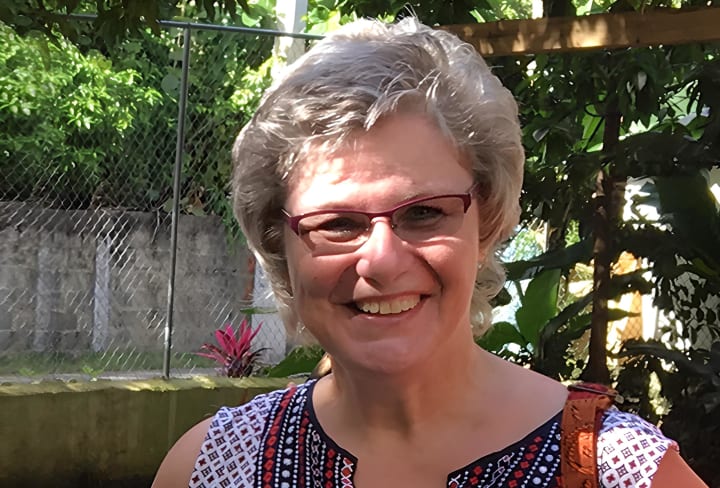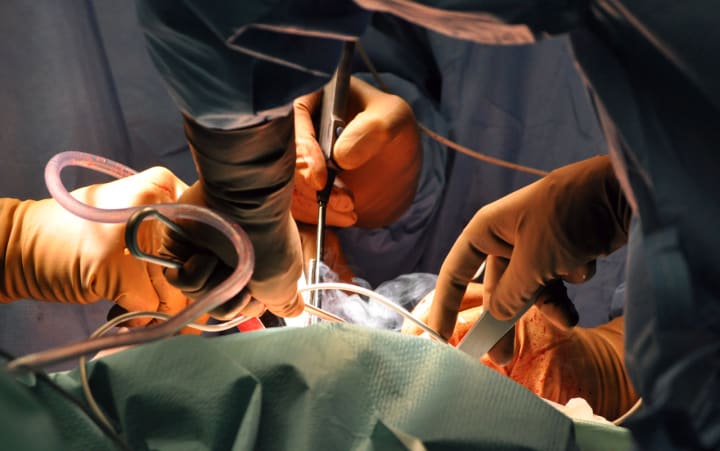“I thought: this is how my life will end”
What do people experience when they suddenly wake up during an operation, and why does this happen?

General anesthesia is needed to make medical procedures painless. However, in vanishingly rare cases, it fails, and the patient may suddenly wake up during the operation. Being in a paralyzed state, he is unable to move or even open his eyes. To his horror, the man feels every touch of the scalpel, unable to give a distress signal. What people actually experience during intra-anesthetic awakening and what is the reason for this phenomenon.
Awakening Donna Penner
Donna Penner from the Canadian city of Altona was never able to recover from the psychological trauma received 13 years ago. In 2008, shortly before her 45th birthday, she experienced heavy bleeding during her period and sought medical attention.
The doctor referred her for an exploratory laparoscopy, a surgical operation in which an incision is made in the patient's abdomen to examine the abdominal organs for signs of injury or disease. Penner was reassured that there was nothing to fear, as she was waiting for a common procedure. However, something went wrong, and the woman woke up seconds before the surgeon made the first incision with a scalpel.
Due to the neuromuscular blocking drugs used at the same time as anesthesia, Penner's body was completely paralyzed. She was conscious and felt the surgeon making incisions in her abdomen. And while the doctors examined her body, the patient was pierced by indescribable pain. “I thought, ‘That’s it, this is how my life will end, right here on the operating table, and the family will never know what I experienced in the last few hours of my life, because no one will even notice what happened to me. the Canadian admitted.

Painful memories still do not allow her to sleep peacefully. She wakes up several times a night seing nightmares. Penner has stopped wearing neck-tight clothes and accessories because they make her feel like she's suffocating. What she had to experience shortly before the anniversary, she calls a life sentence, which can hardly be canceled.
Breakthrough In Medicine
Penner's medical case is undeniably rare, but not an isolated one. A 2017 study of 260 people by University of Wisconsin shows that about five percent of patients can regain consciousness on the operating table despite being placed under anesthesia.
However, due to the effect of anesthesia, many of the patients eventually forget about the experience of intraanesthetic awakening. Now more than ever, it is important for doctors to investigate such cases, given how often anesthesia is used in the treatment of patients.
Anesthesiology appeared two centuries ago and became a real breakthrough in the world of medicine. On October 16, 1846, Boston dentist William Morton was the first in the world to successfully perform ether anesthesia in the removal of a submandibular tumor in a patient, Gilbert Abbott. Although the patient could still mutter under his breath, he no longer felt pain, just a faint sensation of being "scratched with a hoe" on his skin.
Before the advent of anesthesia, surgery was considered an extreme and most cruel way to treat a patient. At the same time, the areas in which the surgeon could practice were strictly limited: minor surgery, amputation of limbs, excision of necrotic tissues and removal of stones from the bladder. The abdomen and chest were forbidden areas.
Many patients died on the operating table, unable to bear the pain. Some patients survived only due to the fact that they lost consciousness due to agony.
The success of the operation without anesthesia was determined only by the speed of the surgeon. However, with the advent of general anesthesia, surgery has moved to a new level. Now doctors could operate on patients more slowly, and therefore more accurately and precisely. Anesthesiology allowed to treat forbidden areas. Over time, ether began to be replaced by more modern inhalation anesthetics.
Currently, anesthesiologists have a wide range of pain medications available. The choice of one or another means, as well as the dose, depend on the procedure and the needs of the particular patient.
As a rule, surgeons are faced with the task not to make the patient unconscious, but to reduce or completely block the sensitivity of a certain part of the body. For example, to “freeze” the lower half of the body, regional anesthesia is used: spinal or epidural anesthesia. It is most commonly used during childbirth, bladder surgery, and hip arthroplasty.
Pitfalls of Anesthesia
Drugs that are injected into the patient's body before operation completely turn off consciousness. Under anesthesia, a person does not feel pain and most often experiences amnesia. The exact mechanisms of general anesthesia are still not fully understood. There is a theory that anesthetics blunt neurotransmitters - substances that regulate brain function.
For example, the short-term hypnotic propofol is used in general anesthesia as a sedative. It enhances the work of gamma-aminobutyric acid (GABA) - the most important inhibitory neurotransmitter of the central nervous system.
"It's possible that anesthesia interferes with the active transmission of information," says University of Wisconsin anesthesiologist Robert Sanders. In this case, the mind turns off, unable to process and respond to body signals.
Anesthesiology has been working wonders for more than 170 years, saving the lives of millions of people. However, as with other medical procedures, there are complicating factors. Some people have a high threshold for anesthetics. In this case, the drugs do not reduce brain activity, and the person remains conscious. In difficult cases, for example, with injuries with a large loss of blood, the doctor has to manage with smaller doses of anesthetics so as not to aggravate the patient's condition.
In some cases, the patient may move their limbs and even speak to alert the surgeon that the drugs are not working. However, if the patient was injected with muscle relaxants, it is no longer possible to give a signal. It is for this reason that a small percentage of people become hostages of their body and are conscious on the operating table. Most often, they hear sounds and feel pain, but cannot call for help.
Operation Not Yet Completed
Penner recalls being nervous before laparoscopy, even though she had had operations under anesthesia in the past, and everything went without any problems. She was taken to the operating room, placed on the table and given the first dose of medication. Soon she began to fall asleep, having time to think: "Well, that's it, it worked."

When the Canadian regained consciousness, she heard the nurses fussing around the operating table. Penner felt a touch on her stomach and decided that the examination was over and the medical staff was rubbing her skin. “I thought, ‘Well, you needlessly worried,’” she says. And then, to her horror, she heard the surgeon ask the nurse to give him a scalpel. The operation isn't over yet, she suddenly realized. In fact, it hasn't even started yet.
The next thing the patient felt was a sharp pain from a knife piercing her body. She tried desperately to move and speak, but the muscle relaxants kept her body immobilized.
I felt so... so helpless. I couldn't do anything. Don't move, don't scream, don't open your eyes. I tried to cry so that tears would run down my cheeks, hoping that they would notice this and understand that something was wrong. But I couldn't cry - Donna Penner
Penner directed all her strength to move one foot, and as a result she succeeded. The Canadian felt relieved when the nurse touched her leg with her hand. However, before she could move her foot again, the paramedic withdrew her hand. The patient tried three times to draw attention to herself, but to no avail. “I lost all hope, realizing that I only have one way to communicate, and even that doesn’t work,” she admits.
It seemed that immediately after the operation, her torment should have ended. But as soon as the effect of the muscle relaxants began to fade, Penner began to move her tongue near the tube inserted into her throat. In this way, she wanted to hint to the staff that she was conscious all this time.
The paramedic took her message differently and prematurely took out the oxygen tube, before the muscle relaxants finally wore off and her lungs began to work on their own. “I was lying on the operating table, and he took away what kept me afloat, my oxygen. I couldn't breathe,” she says.
Memories of the experience and a sense of insecurity haunt the woman to this day. Psychological trauma forced her to temporarily leave her job and take a sick leave. “It’s hard to sit at home and see how the neighbors come out of the house in the morning, get into their cars and leave for work, and realize that I can’t,” she complained in an interview in 2019.
A Little-Studied Phenomenon
There are various organizations around the world investigating such incidents. However, the Anesthesia Awareness Registry at Washington State Research University is considered to provide the most detailed analysis. Operating since 2007, the university organization has collected information on hundreds of medical cases of intraanesthetic awakening.
And although all stories are strictly anonymous, they shed light on this little-studied phenomenon. Nearly all patients who experienced inadvertent awakening from general anesthesia reported hearing voices and other sounds.
“I heard songs in one genre and tried to understand why my surgeon chose it,” recalls one of the patients. Another patient noted that he also heard different voices, and it seemed to him that people were excited. “They said they were losing me,” he recounted.
More than 70 percent of those who survived intraoperative recovery from anesthesia complained of pain. “I felt sharp pain and burning from four incisions, it felt like a finger cut with a sharp knife,” the patient recalls. “And then the burning, unbearable pain.”
It is the paralyzing effect of muscle relaxants that scares patients more than anything else. According to the stories of patients, due to muscle blockers, a person has a feeling that he stops breathing. And to all this - devastating helplessness. “To myself, I shouted something like: “Don’t they understand that I’m not sleeping, open your eyes and give them a signal,” one of the victims noted. The panic is exacerbated by the fact that patients experiencing intraanesthetic awakening do not know what is happening to them and think that they are dying.
Fortunately, judging by the statistics, such incidents are really extremely rare.
One of the largest and most detailed studies was the fifth draft national audit conducted by the British and Irish Associations of Anesthesiologists. Under the agreement, each public hospital in the UK and Ireland had to report any cases of intra-anesthetic awakening known to them within a year.
The results, published in 2014, showed that this phenomenon occurs in one in 19,000 patients undergoing general anesthesia. At the same time, if paralyzing drugs were administered during anesthesia, intraoperative exit from anesthesia occurred more often - in one in eight thousand patients - because people could not warn doctors about the problem.
Controversial Facts
To investigate this phenomenon, experts use what they call the hand isolation technique. During the injection of anesthesia, the patient's shoulder is tightened with a belt that does not allow muscle relaxants to block the arm. Thanks to this, for some time the patient can still move his arm and answer the doctor's questions: is he conscious and does he feel pain.
In one of the largest studies of its kind, University of Wisconsin anesthesiologist Robert Sanders collaborated with colleagues from six hospitals in the US, Europe, and New Zealand. Of the 260 patients who participated in the experiments, 4.6 percent confirmed that they were still conscious, despite the effect of general anesthesia.
The data obtained is contrary to the indicators noted in the framework of the 2014 national audit project. Approximately four out of ten patients treated with the isolated hand technique - 1.9 percent of the entire study group - also said they felt pain. These results call into question the ethical aspect of the use of anesthesia.
According to Sanders, there is no evidence to date that patients who respond to pain during arm-tightening experiments, but do not remember the experience later, do not experience post-traumatic stress disorder and other psychological problems, such as in the case of Penner. . After all, if a person does not experience adverse effects in such a case and does not remember anything, one might think that intraanesthetic awakening is an unpleasant experience, but most often not a cause for concern.
Sanders decided to conduct a survey among ordinary people and was surprised to hear mixed opinions. A surprisingly large number of respondents stated that they would take such a sudden exit from anesthesia calmly if the painful experience would surely disappear from their memory upon awakening.
Statistics Can Lie
Undoubtedly, various articles and studies on the topic of intraanesthetic awakening can frighten patients preparing for surgery. Some even refuse anesthesia and subsequent treatment in order to avoid the possible consequences of general anesthesia. However, it should be remembered that the risk of sudden withdrawal from drug sleep is extremely low.
Doctors are convinced that this phenomenon should be known to as many people as possible. In some cases, described in medical journals, patients were unaware of the existence of such a phenomenon and upon awakening were convinced that they were dying. Perhaps with greater awareness, patients will be able to experience this experience less painfully.
Greater awareness of this issue may also help clinicians treat patients who have experienced intraanesthetic awakening. Many patients, including Penner, claim that their behavior on the operating table was perceived by doctors incorrectly.
According to a study by scientists from the University of Washington, 75 percent of patients who experienced an unplanned awakening from anesthesia were dissatisfied with the staff's response to their complaints. 51 percent of people claimed that neither the anesthesiologist nor the surgeon expressed sympathy for them. Only 10 percent of those affected said the hospital apologized to them, and only 15 percent were referred to specialists who helped them cope with psychological trauma.
When Penner tried to report what had happened to the nurses, they stood there in disbelief and remained silent. “I will never forget the look on their faces – they seemed to be in total shock,” she says. “They don’t know what to do in a situation like this.” The Canadian believes that doctors should study this phenomenon more.
Penner hopes that further research on intraanesthetic awakening will help to better understand the effects of general anesthesia and, as a result, reduce the number of cases of sudden awakening during surgery. Scientists believe that with a deeper study of drug-induced sleep, doctors will be able to use this phenomenon for the benefit of patients.
About the Creator
Enjoyed the story? Support the Creator.
Subscribe for free to receive all their stories in your feed. You could also pledge your support or give them a one-off tip, letting them know you appreciate their work.





Comments
There are no comments for this story
Be the first to respond and start the conversation.